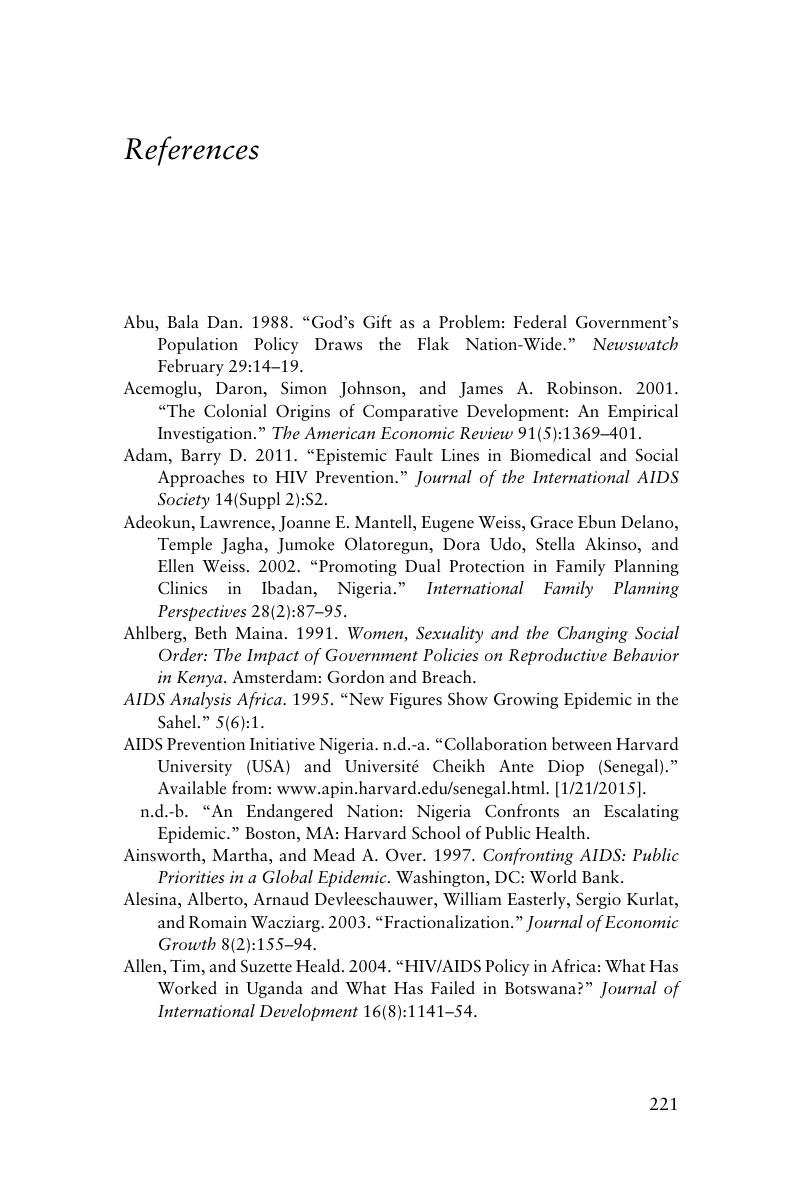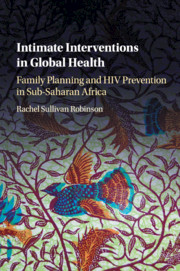Book contents
- Intimate Interventions in Global Health
- Intimate Interventions in Global Health
- Copyright page
- Dedication
- Contents
- Tables and Figures
- Acknowledgments
- 1 Introduction: Understanding the Links between Family Planning and HIV Prevention
- 2 The Intersection of the Global Population and AIDS Fields
- 3 From Family Planning to HIV Prevention in Sub-Saharan Africa
- 4 Malawi: Negative Policy Feedback and Political Legacy
- 5 Nigeria: Transnational Pressure and Political Disruption
- 6 Senegal: Transnational Ties and Technocratic Leadership
- 7 Conclusion: The Implications of Intimate Interventions for Global Health
- References
- Index
- References
References
Published online by Cambridge University Press: 04 May 2017
- Intimate Interventions in Global Health
- Intimate Interventions in Global Health
- Copyright page
- Dedication
- Contents
- Tables and Figures
- Acknowledgments
- 1 Introduction: Understanding the Links between Family Planning and HIV Prevention
- 2 The Intersection of the Global Population and AIDS Fields
- 3 From Family Planning to HIV Prevention in Sub-Saharan Africa
- 4 Malawi: Negative Policy Feedback and Political Legacy
- 5 Nigeria: Transnational Pressure and Political Disruption
- 6 Senegal: Transnational Ties and Technocratic Leadership
- 7 Conclusion: The Implications of Intimate Interventions for Global Health
- References
- Index
- References
Summary

- Type
- Chapter
- Information
- Intimate Interventions in Global HealthFamily Planning and HIV Prevention in Sub-Saharan Africa, pp. 221 - 272Publisher: Cambridge University PressPrint publication year: 2017



